The Gold-to-Silver Ratio: A Key Metric for Precious Metal Investors
Disclaimer:Global Coin is a dealer of precious metal coins and does not provide investment, financial, or legal advice. Any information provided is for informational purposes only and should not be construed as investment advice. Investors should conduct their own...

Disclaimer:
Global Coin is a dealer of precious metal coins and does not provide investment, financial, or legal advice. Any information provided is for informational purposes only and should not be construed as investment advice. Investors should conduct their own due diligence and consult a qualified financial professional before making any investment decisions. Gold and rare coin investments involve risks, including fluctuations in the current price and past performance is not indicative of future results.
I’m Stephen Pfeil, founder of Global Coin, and for over 20 years, I’ve used the gold-to-silver ratio as my secret weapon in the precious metals game. It’s not just a number—it’s a rebellious tool that cuts through market noise, helping me time trades and build portfolios that defy economic chaos. During times of economic uncertainty, gold is often sought after for its security as a reliable store of value, a hedge against inflation, and as one of the top safe haven assets. In 2025, with gold surging even in a thriving stock market and central banks hoarding more gold than U.S. Treasuries for the first time since 1996, this ratio is more critical than ever. Add to that silver’s relentless demand in AI chips—outweighing gold by weight—and five straight years of silver consumption outstripping supply, and you’ve got a market ripe for bold, informed moves. Let me break down the ratio’s essentials, its history, and how I use it to outsmart the market.
What Is the Gold to Silver Ratio?
The gold-to-silver ratio is my go-to metric, a simple calculation: divide the current spot price of gold per troy ounce by the spot price of silver per troy ounce. The gold-to-silver ratio (also called the gold silver ratio) is calculated this way to determine how many ounces of silver are needed to purchase one troy ounce of gold.
For example, if the spot price of gold is $2,500 per troy ounce and the spot price of silver is $30 per troy ounce, you calculate the ratio by dividing $2,500 by $30. The resulting number is 83.3—meaning one troy ounce of gold buys 83.3 troy ounces of silver. This example shows how the ratio is calculated using current market prices (spot prices) and illustrates how many ounces of silver are needed to purchase one ounce of gold.
The resulting number represents the relative value between gold and silver. Investors use this calculation to identify potential purchase opportunities when the ratio reaches extreme values, signaling when silver may be undervalued (high ratio) or gold may be a better buy (low ratio). It’s my edge, letting me challenge market trends and spot opportunities others miss.
Why It’s a Key Metric for Investors
This ratio isn’t just math—it’s a window into supply, demand, and investor sentiment. In 2025, gold’s unprecedented surge, even amidst a bull stock market, signals a tectonic shift in finance. Historically, gold thrives in downturns, but this year’s breakout in a thriving global financial markets screams deeper investor distrust in traditional assets. Meanwhile, silver’s role in AI chips—where it outweighs gold by weight—and five years of supply deficits make it a wildcard.
Fluctuations in the ratio can highlight potential investment opportunities by revealing the relative value of gold and silver. When the ratio is high, gold is more expensive compared to silver; when it is low, silver may outperform gold in terms of price appreciation. These relative values are crucial for investors, as understanding them helps make informed decisions about when to buy or sell based on the latest data . A high ratio screams “buy silver”; a low one whispers “grab gold.” I use it to balance portfolios, hedge inflation, and defy the herd.
A Brief History of the Gold-to-Silver Ratio

Historical data and charts are valuable tools for analyzing the gold-to-silver ratio across different periods and different places. By examining these resources, investors can better understand how the ratio has shifted in response to economic events, government policies, and market forces.
I’ve studied this ratio’s history like a map to buried treasure. It’s been shaped by empires, policies, and market rebellions, offering lessons for today’s traders and investors.
3.1 Ancient Roots: Rome and Monetary Stability
In the Roman Empire, the gold-to-silver ratio was fixed at 12:1 to maintain monetary stability. This policy helped ensure a steady relationship between the two metals, reflecting the importance of the ratio in economic governance and coinage laws.
3.2 The Coinage Act and the Nation’s Fiat Currency
The U.S. Coinage Act of 1792 set the gold-silver ratio at 15:1, reflecting the government’s effort to stabilize the value of the nation’s fiat currency. Over time, the influence of the US dollar and dollar-based monetary policies has played a significant role in shaping the gold-silver ratio, as both gold and silver prices are denominated in dollars.
At the end of the day, reviewing historical data and using an interactive chart can help investors visualize how the gold-to-silver ratio has changed over time and across different places. These tools make it easier to identify key periods when the ratio reached extremes or reverted to the mean, supporting more informed investment decisions.
Ancient and Classical Eras
In ancient Egypt, the ratio was 2.5:1. In the Roman Empire, the gold-to-silver ratio was fixed at 12:1 to promote monetary stability, ensuring that both metals maintained predictable value within the economy. Governments set these ratios to stabilize currencies, reflecting mining costs and availability—a wisdom I respect when navigating today’s volatile markets.
The 19th and Early 20th Centuries
The U.S. set the ratio at 15:1 under the 1792 Coinage Act, balancing market forces with stability. Silver’s demonetization in the late 19th century upended this, pushing ratios higher as silver lost monetary status. As the nation transitioned to a fiat currency system and the US dollar became the dominant benchmark, the gold-to-silver ratio and precious metal pricing became increasingly influenced by the value and policies surrounding the dollar. I see echoes of this in today’s market shifts, where central banks’ pivot to gold over Treasuries signals distrust in fiat systems.
Modern Era and Market-Driven Ratios
Today, the ratio dances with supply, demand, and fear. In 2020, it hit 125:1 as gold soared during economic chaos. In 2025, central banks globally holding more gold than U.S. Treasuries—a first since 1996—underscores gold’s role as a primary store of value. Silver’s supply crunch, driven by AI chip demand, keeps the ratio dynamic. I use these swings to spot undervalued metals and act fast.
Why the Gold-to-Silver Ratio Matters for Precious Metals Investors
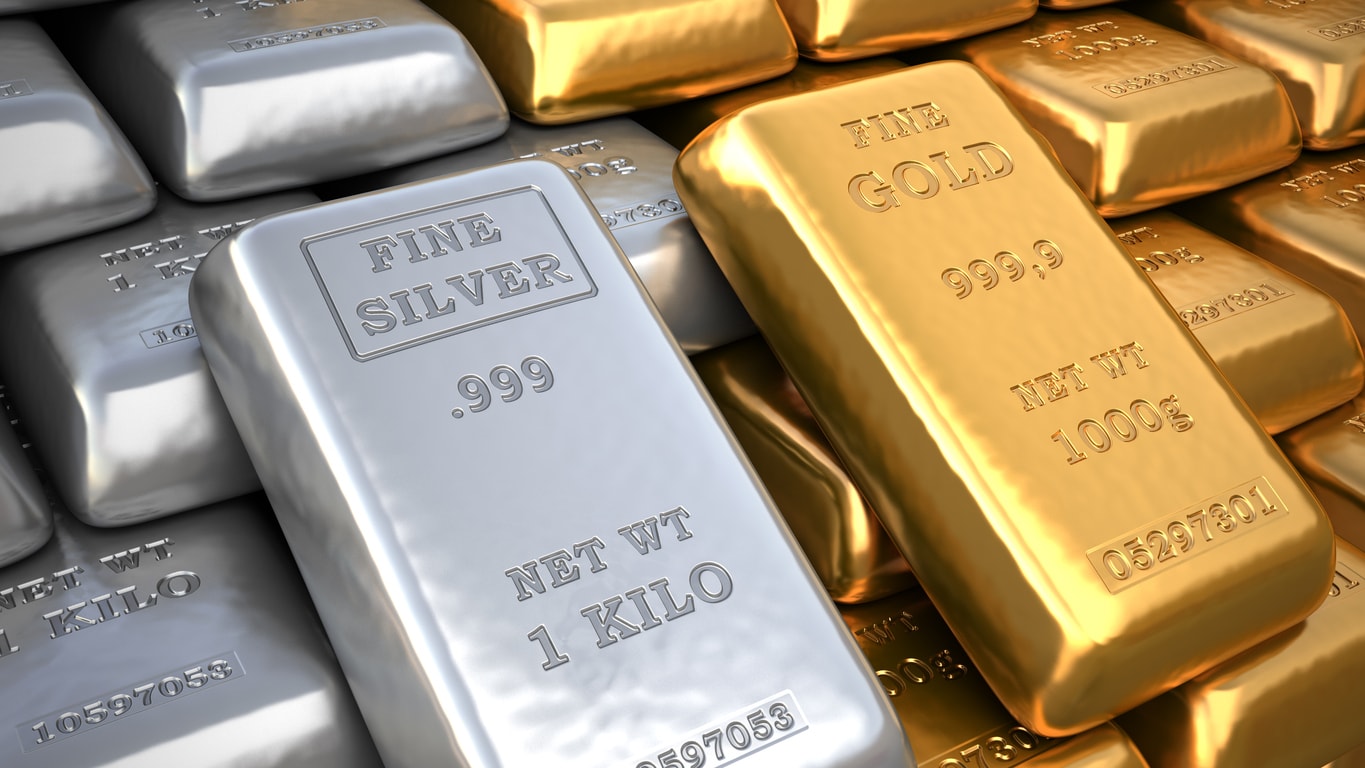
This ratio is my compass in the stormy seas of precious metals investing. The gold-to-silver ratio provides valuable insight into the relationship between the two metals and helps guide decisions about silver investments, particularly as the price of gold fluctuate . Here’s why it’s critical:
1. Market Sentiment and Investment Trends
The ratio reflects investor mood. It shows the relative performance of gold and silver during different market conditions, highlighting how their values change compared to each other. In 2025, gold’s surge amid a bull market and central banks’ gold stockpiling signal a structural shift—investors are betting on gold as a safe haven despite stock gains. Silver’s industrial demand, especially in AI chips, narrows the ratio during growth periods. I watch these shifts in contrast to silver's demand to time my moves.
2. Identifying Undervalued Assets
A high ratio—say, above 80:1—tells me silver’s a bargain compared to gold. A low ratio, below 40:1, screams gold’s undervalued. The gold-to-silver ratio helps investors assess the relative value of gold and silver, making it easier to identify which metal may be undervalued at a given time. I’ve used this to buy low and sell high, defying market hype for real gains.
3. Adjusting Portfolio Strategy
I balance gold and silver holdings to hedge inflation and volatility. The ratio guides me to reallocate—more silver when it’s cheap, more gold when it’s a steal. By monitoring the ratio, investors can adjust their holdings as the values of gold and silver change. It’s how I keep portfolios resilient.
Key Factors That Affect the Gold-to-Silver Ratio
I’ve seen these forces shape the ratio over decades: fluctuations in the supplies of gold and silver are a major factor influencing the gold-to-silver ratio. Changes in availability or scarcity of these metals can cause significant shifts in the ratio, especially when combined with demand changes that have been created by market trend .
1. Economic Conditions and Inflation
Gold shines in high-inflation times, pushing the ratio up. In 2025, inflation fears and U.S. debt concerns drive gold’s value, while silver’s industrial uses balance it out. Changes in the value of the dollar can significantly impact gold and silver prices, and thus the ratio.
2. Industrial Demand for Silver
Silver’s in everything—solar panels, batteries, and now more AI chips than gold by weight. Silver's industrial applications drive much of its demand, influencing both its price and the gold-to-silver ratio. Five years of supply deficits have tightened markets, boosting silver’s price and narrowing the ratio during growth spurts. Secondary supply, such as recycled silver, tends to respond to price changes rather than drive them.
3. Monetary Policy and Interest Rates
Low interest rates make gold a star, raising the ratio. Rising rates favor income assets, lowering it. I track central bank moves to predict these shifts. The net buying or selling of gold by central banks, especially in relation to the us dollar, can influence the overall supply and affect the gold-to-silver ratio.
4. Geopolitical Events and Market Volatility
Wars or trade disputes, like the Russia-Ukraine conflict, spike gold demand, raising the ratio. I use these moments to buy undervalued silver.
How to Use the Gold-to-Silver Ratio in Investment Strategies

Here’s how I leverage the ratio at Global Coin:
Investors often use the gold/silver ratio to inform their purchase decisions of gold and silver, analyzing market trends and industrial demand to determine the optimal time to buy one ounce of each .
1. Buy Low, Sell High
When the ratio’s high, I buy silver—like Silver Eagles or Krugerrands—expecting it to rise. When it normalizes, I swap for gold or cash. It’s a rebellious way to maximize returns.
2. Timing Market Entries and Exits
I monitor ratio trends to enter or exit markets. A spiking ratio signals silver buys; a dropping one, gold. Data drives my decisions.
3. Rebalancing a Portfolio
I keep portfolios diverse with gold and silver coins, adjusting based on the ratio. ETFs offer flexibility for quick trades, but I prefer physical metals for long-term defiance.
Q&A: Understanding the Gold-to-Silver Ratio
How can I use the gold-to-silver ratio to time my investments?
I check the ratio against historical averages (40:1 to 80:1). High? Buy silver. Low? Grab gold. It’s about spotting value others miss.
What is a “normal” gold-to-silver ratio?
Historically, 40:1 to 80:1. Above 80:1, silver’s cheap; below 40:1, gold’s a deal. In 2025, expect volatility from silver’s supply crunch.
Does the ratio consistently predict future prices?
It’s a tool, not a crystal ball. I combine it with market trends—like central bank gold buys—to make informed calls.
Why did the ratio spike in 2020?
Economic fear drove gold prices sky-high, hitting 125:1. I used that to buy silver at a discount.
Can the ratio help with short-term trading?
Yes, but it’s risky. I’ve seen traders profit by swapping metals on ratio swings, but you need sharp market instincts.
Ready to Leverage the Gold-to-Silver Ratio?
The gold-to-silver ratio is my edge in a chaotic market. In 2025, with gold defying bull markets and silver stretched thin by AI demand, it’s your chance to act boldly and wisely. At Global Coin, we offer gold and silver coins to fit your strategy—American Eagles, Krugerrands, and more. Explore our collection, including options to buy gold, and let’s build a portfolio that thrives.
About the Author: Stephen Pfeil is the founder of Global Coin, a 20-year veteran in precious metals with a passion for empowering investors. His sage advice and bold vision make him a trusted guide in numismatics. For Stephen's insights on top platinum coins and investing wisely, explore his latest guide.
Related Articles
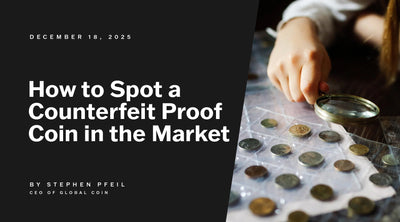
How to Spot a Counterfeit Proof Coin in the Market
How to Spot a Counterfeit Proof Coin in the Market In the world of numismatics, few things hold ...
Discover More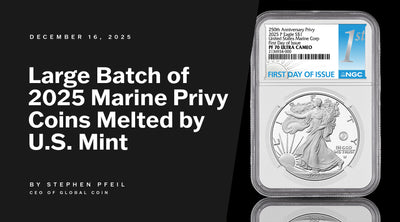
BREAKING NUMISMATIC NEWS: Large batch of 2025 Marine Privy Coins MELTED by U.S. Mint
BREAKING NUMISMATIC NEWS: Large batch of 2025 Marine Privy Coins MELTED by U.S. Mint A historic ...
Discover More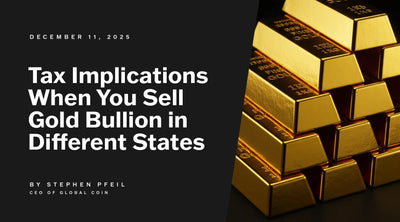
Tax Implications When You Sell Gold Bullion in Different States
Disclaimer: The following content is for informational purposes only and should not be construed ...
Discover More

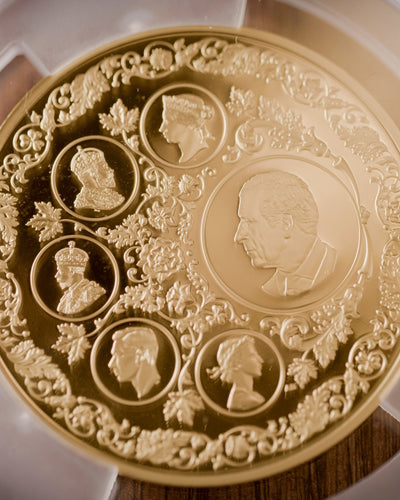
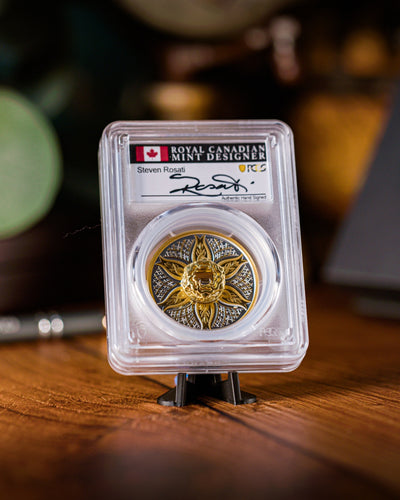
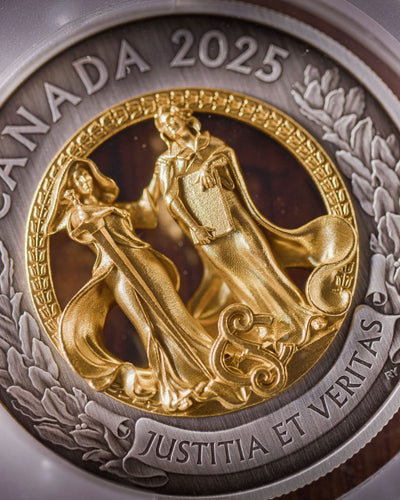

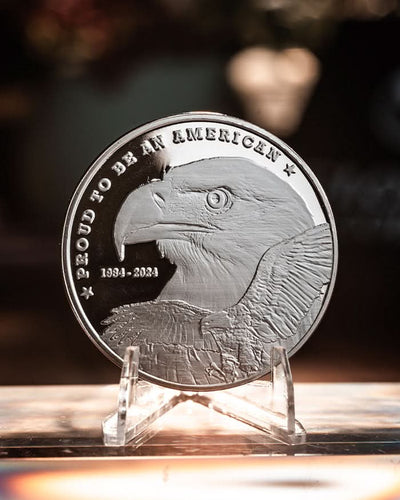
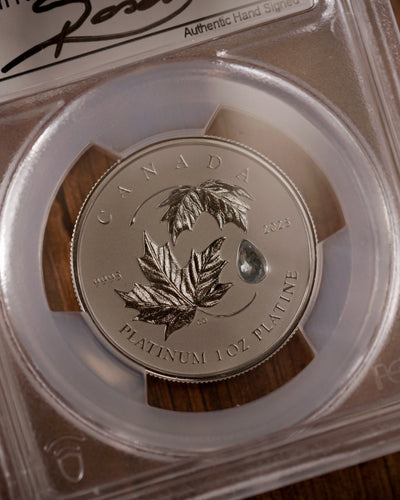
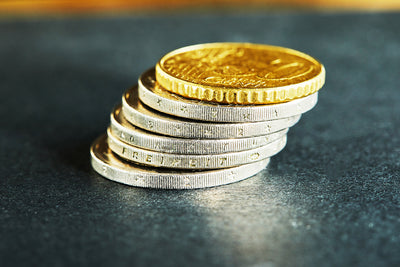
6 comments
Keep up the great work! Thank you so much for sharing a great posts.
https://shrikrishnajewels.in/
harshil
Keep up the great work! Thank you so much for sharing a great posts.
https://shrikrishnajewels.in/
harshill
The gold-to-silver ratio is such a useful tool for investors. It helps you decide when it might be a good time to buy or sell based on market trends. I’ve been watching the ratio myself, and it’s definitely a good time to consider silver, especially when the ratio is high. For example, a 1 oz silver bar from BOLD Precious Metals can be a great way to take advantage of those market shifts
elena
The gold-to-silver ratio is such a useful tool for investors. It helps you decide when it might be a good time to buy or sell based on market trends. I’ve been watching the ratio myself, and it’s definitely a good time to consider silver, especially when the ratio is high. For example, a 1 oz silver bar from BOLD Precious Metals can be a great way to take advantage of those market shifts
elena
Insightful read on the gold-to-silver ratio! Understanding this metric is crucial for precious metal investors, especially given the current ratio hovering around 100:1, indicating potential undervaluation of silver . This article effectively highlights how monitoring the ratio can inform strategic decisions in diversifying and optimizing investment portfolios. A valuable resource for both novice and seasoned investors.
https://silvercrownroyalties.com/
Silver Crown
The gold-to-silver ratio is such a clutch metric for stacking smart! 🪙 High ratio? Time to grab some silver deals. Low ratio? Gold’s looking good. I always hit up Bullion Mentor for live price comparisons—no guessing, just smart moves. 💰 Anyone else using the ratio to time their buys?
susan brown
Leave a comment
This site is protected by hCaptcha and the hCaptcha Privacy Policy and Terms of Service apply.